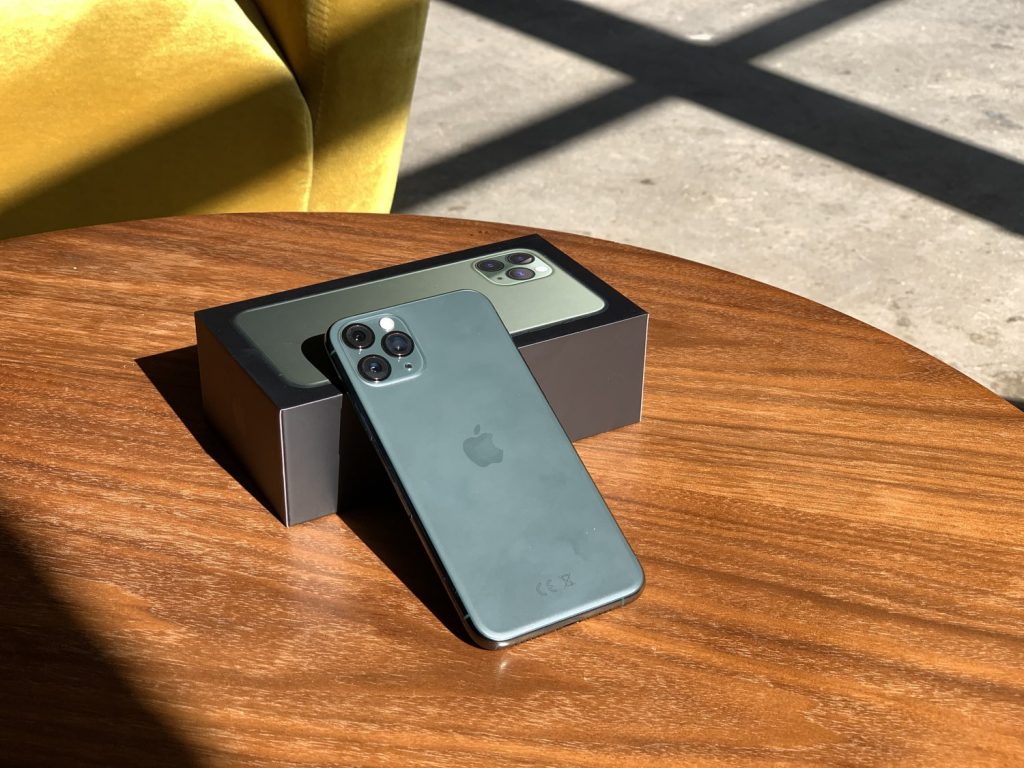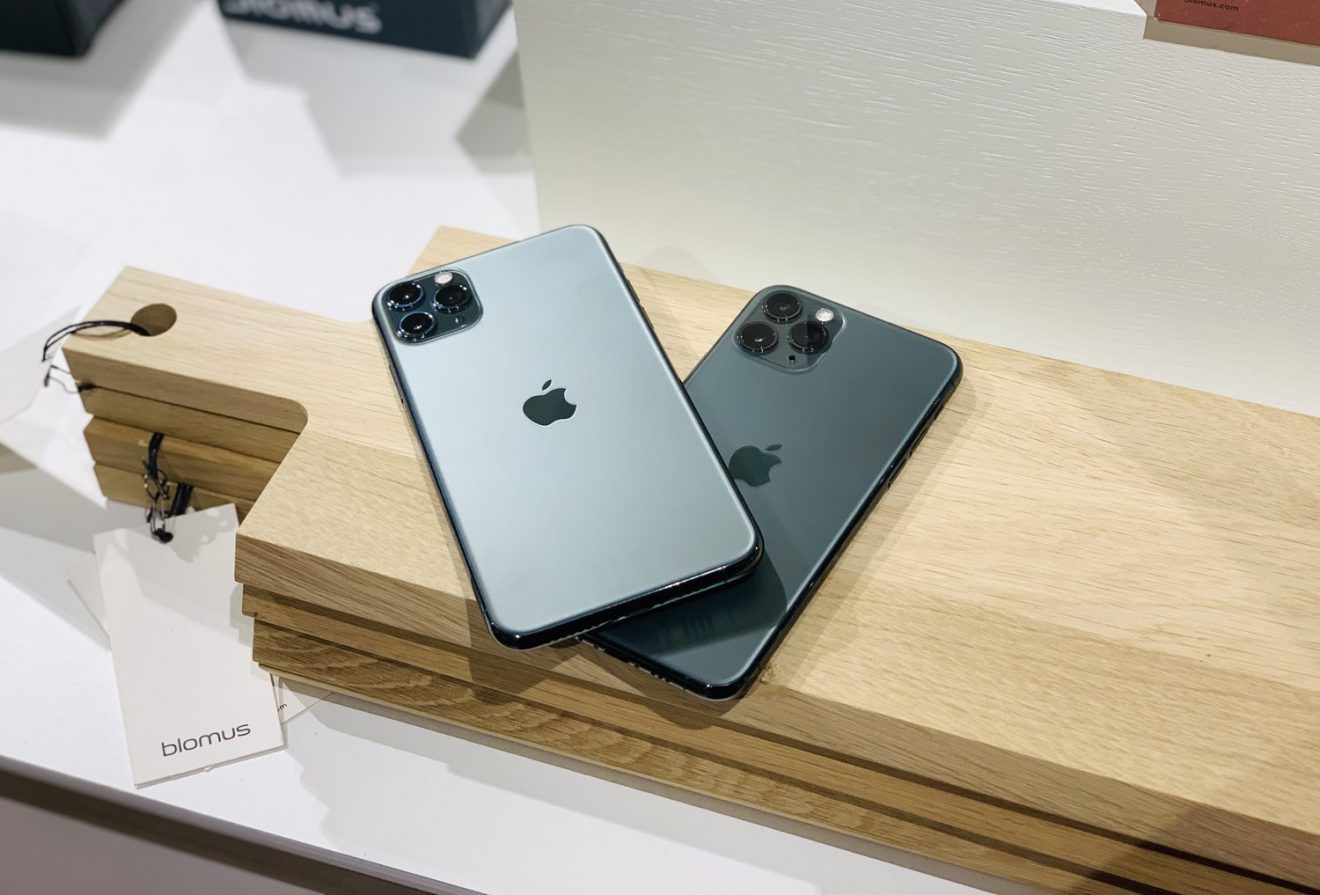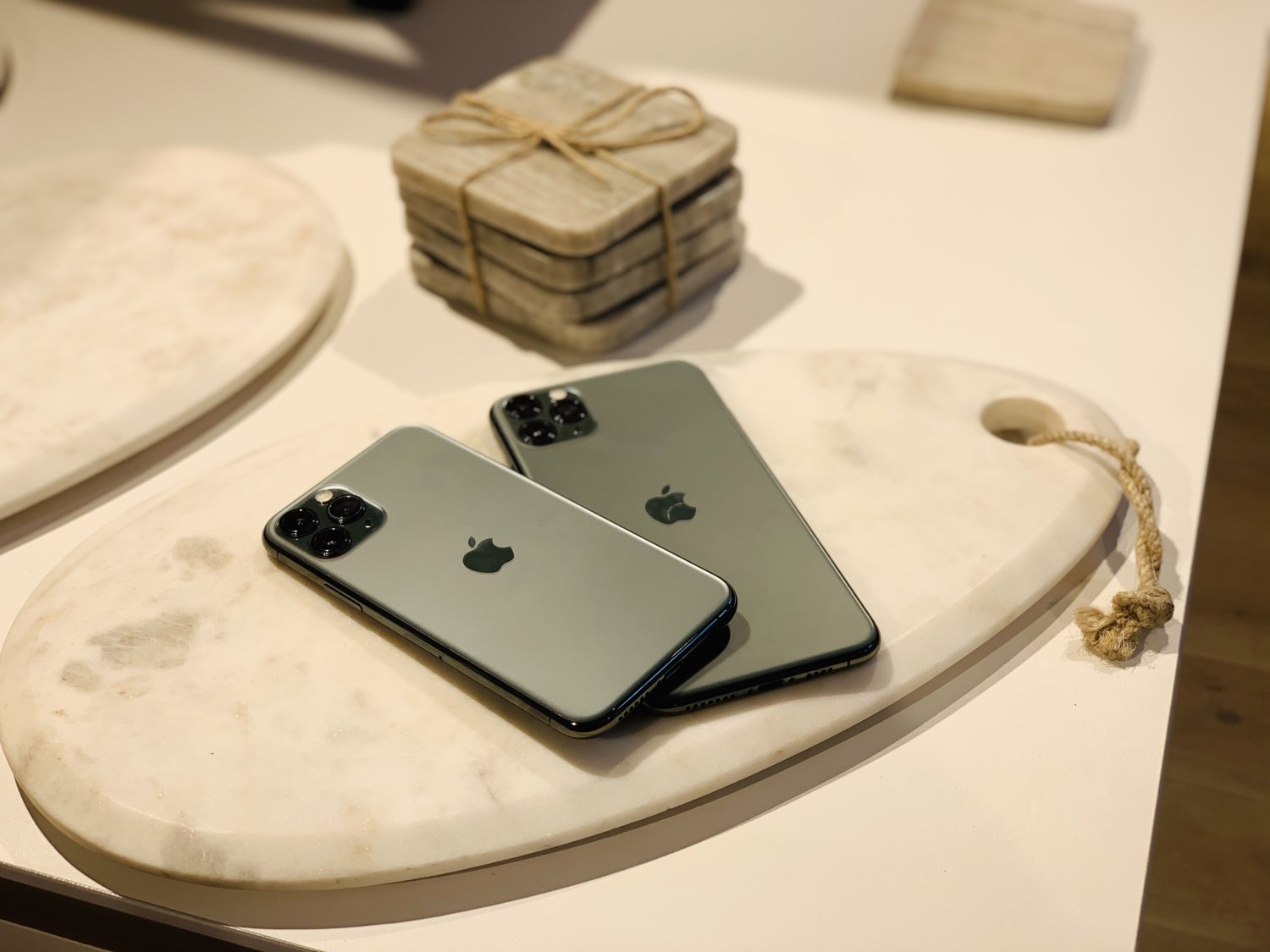In this review of the iPhone 11 Pro (Max) you can read what we think of this new top device and the larger variant, the iPhone 11 Pro Max. What were our experiences during testing? And is the iPhone 11 Pro really for professionals, or does it offer too little compared to the cheaper entry-level model? We’ll tell you all!
iPhone 11 Pro review
The iPhone 11 Pro is this year’s new top model. It is several hundred euros more expensive than the iPhone 11 and in return you get a more luxurious housing and extra functions. The question, of course, is: does this Pro offer enough to justify that higher price? We have sorted it out for you!
About the photos in this review
When taking the photos for this review, we emphasized green tones. The new color midnight green became very popular right from the announcement, so it seemed as if ‘everyone’ had to have it. Still, the color looks very different under different lighting conditions and we wanted to show that with these photos. As a result, the device can suddenly get a completely different look. As the photos will show, the device is sometimes very dark green and at other times almost colorless soft gray. Midnight green is the new space gray in our opinion. Are you worried that greenery is too frivolous for you? Don’t panic: it really isn’t.
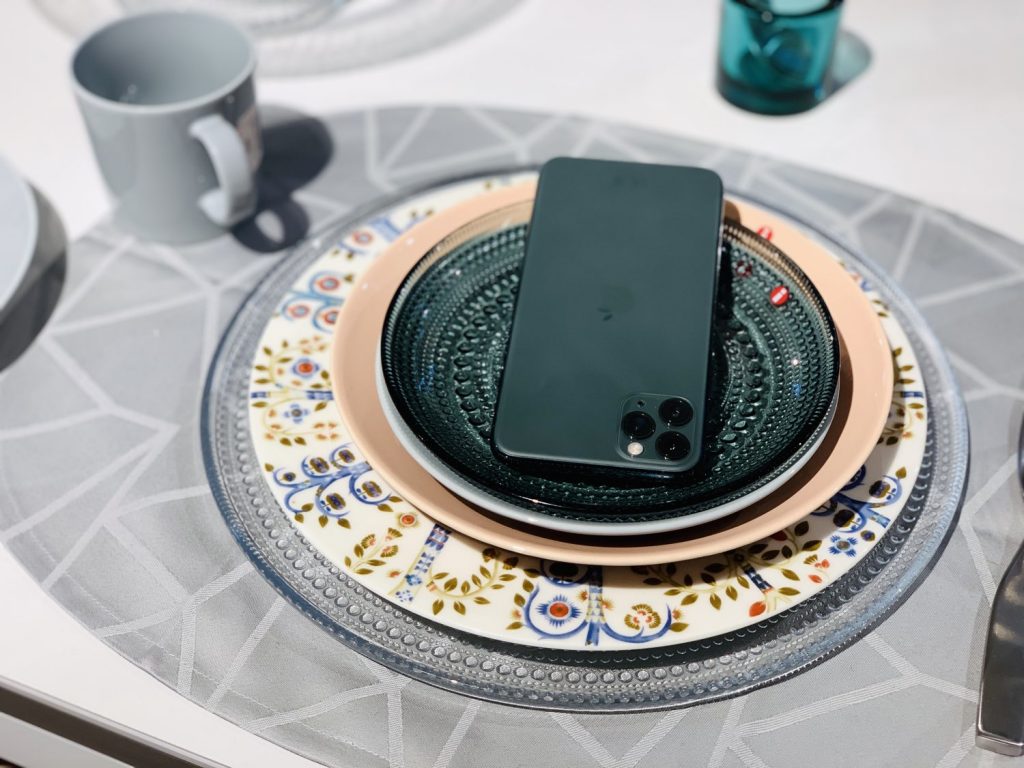
The differences between the iPhone 11 Pro and the iPhone 11 Pro Max are not that big (except for the size). That is why we also immediately discuss the iPhone 11 Pro Max in this review. If you want to compare more iPhones , check our full overview.
Watch our review video of the iPhone 11 (Pro Max) below:https://www.youtube.com/embed/U6C5yt7Yx4Y?feature=oembed
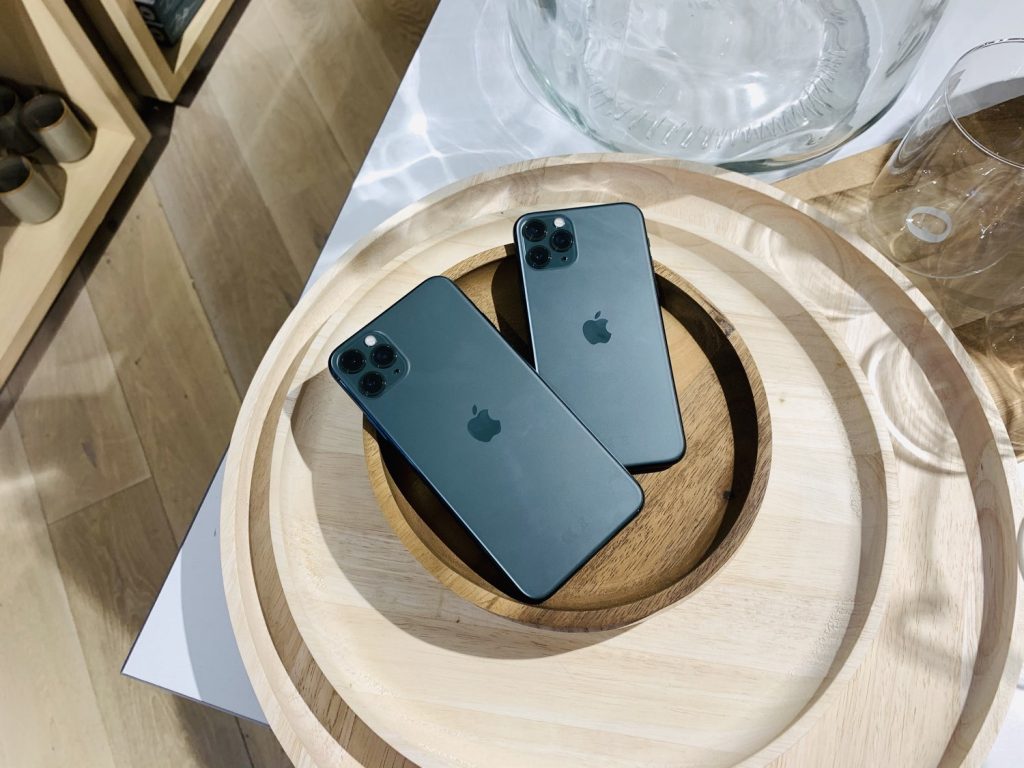
Introduction
The iPhone XS has to leave the field for the iPhone 11 Pro this year. Apple immediately switches back to normal numbers: no XS but just 11. Moreover, the three devices of this year are more closely aligned in terms of naming. Last year, the iPhone XR was still clearly separate from the two high-end models. Now it’s much more like one big iPhone 11 family, with the iPhone 11 being a great choice for most people and the iPhone 11 Pro and iPhone 11 Pro Max for those who want more.
The iPhone 11 Pro has a completely new camera system, a longer battery life and an improved screen. These are also the main differences with the iPhone 11 . The fact that the housing has a different finish and is available in other colors will be a factor that plays a role for many people, but as a reviewer we try to look at it a bit more rationally and then they are factors that are less important. We are mainly concerned with the question: is this a good device?
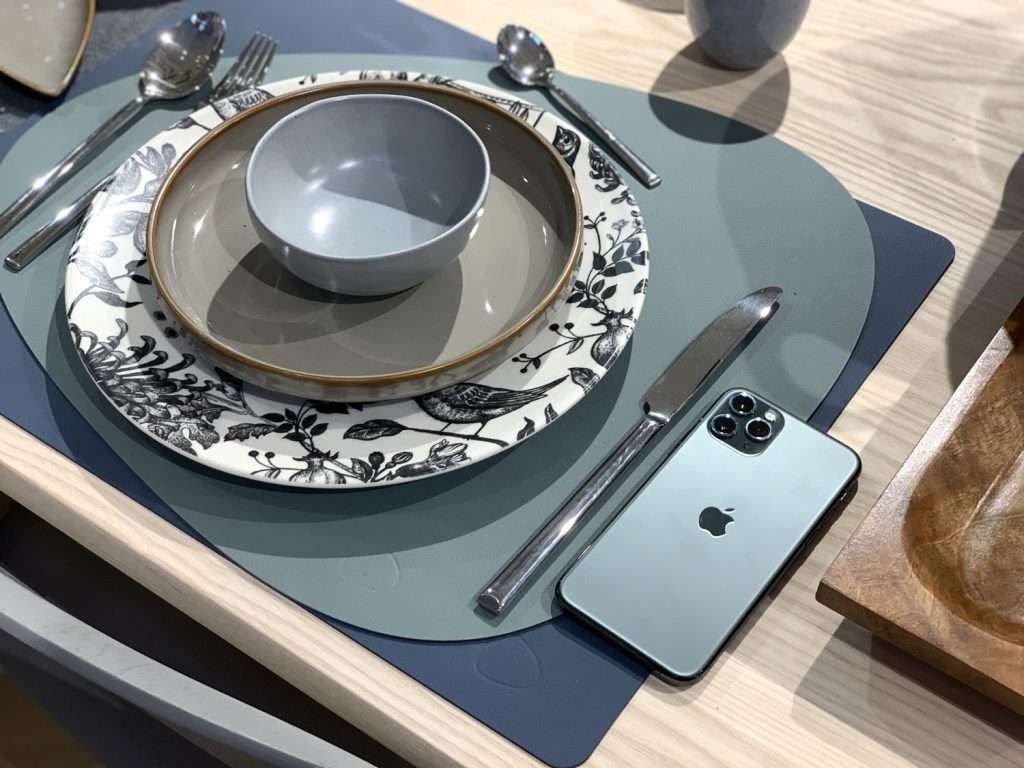
Design iPhone 11 Pro: it takes some getting used to
- Matte back
- New midnight green color
- Prominently present camera lenses
- IP68 water resistance
- 18 grams heavier than predecessor (Max)
The iPhone 11 Pro (Max) has a similar appearance to the iPhone XS Max. The biggest change is the extra camera on the back and the fact that the camera lenses are arranged a bit differently. Instead of a neat row with two lenses, you now have a somewhat messy square, with lenses that are staggered. Honestly, we expected worse based on the photos that leaked beforehand. You get used to it in daily practice and if you use a cover, the camera bulge no longer protrudes. The camera is not ugly, but to be honest, we think Apple could have designed it a bit better.
Do you opt for the 5.8-inch or the larger 6.5-inch version? That is a matter of preference and also depends on how deep your trouser pockets are. The specifications are exactly the same except for the screen size and battery size. The Max is all about the larger screen and longer battery life, there are actually no other advantages.
Front and other appearances
The device has remained the same at the front: a large black surface with a notch at the top, which is just as big as before. Face ID has been improved: it works faster and at a greater angle, according to Apple. In practice, however, we have not noticed that much difference, so we do not think it is a reason to upgrade now. There is still a Lightning connection at the bottom and the buttons and speaker holes are also in the same place.
Apple has not yet made the switch to USB-C and we think that is a bit strange for this model. If you also already have an iPad Pro 2018 , you still have two different connections. On the one hand, it’s nice that Apple is sticking to Lightning, so that all your accessories continue to work. On the other hand, Apple will probably make the switch one day and we think this was the right time.
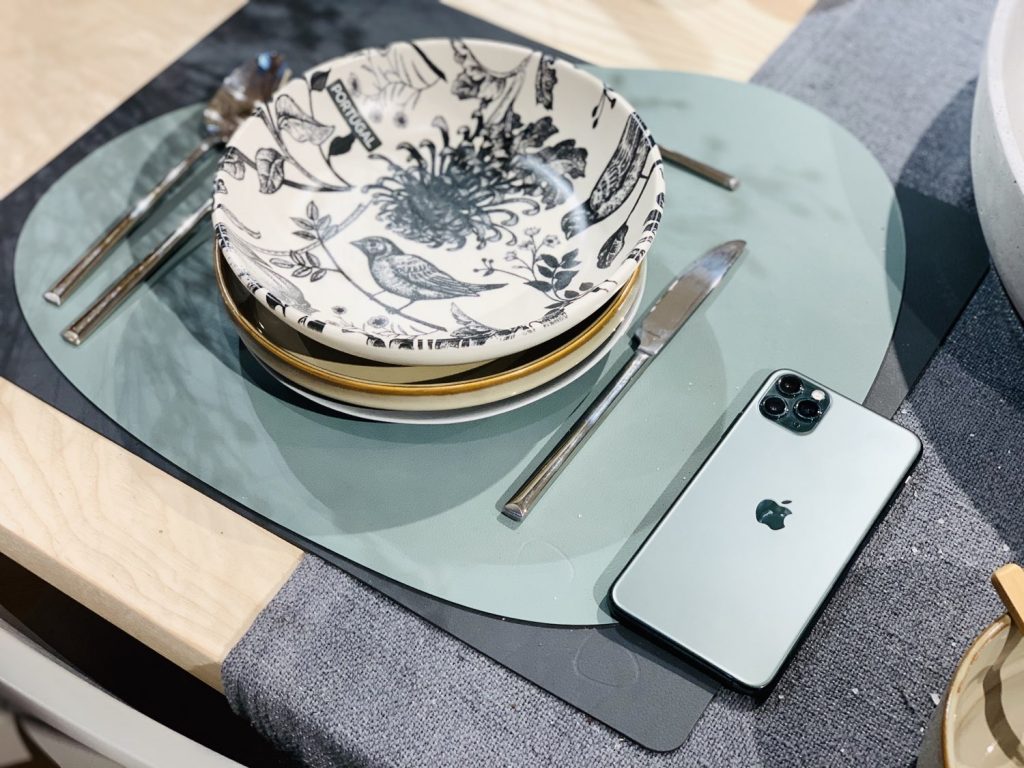
Matte glass back
It is true that you can no longer hide the color of your device with a cover. All covers that have appeared so far have a large square hole through which you can continue to see the color of the device. So you will have to take into account a nice color combination of iPhone and case. For example, we think a red case with a dark green device has a little too much of a Christmas look.
If you choose neutral colors such as space gray or silver, then of course you will not have that problem. This also brings us straight to the point of color choice. This year, in addition to space gray, silver and gold, you also have the choice to go for midnight green. At the iCulture editorial team, we have all opted for this and so far we like it. However, the matte finish makes it a somewhat ‘washed out’ color. This problem also occurs with space gray: it is no longer as striking deep dark gray as before. The advantage of the matte finish is that you don’t see greasy fingers that quickly. An additional advantage of the matte back is that you immediately feel in your pocket what the front and back are. The chance that you take the device out of your pocket the wrong way is therefore a lot smaller.
The picture below shows that the midnight green color can turn out very differently, even when the two devices are next to each other:
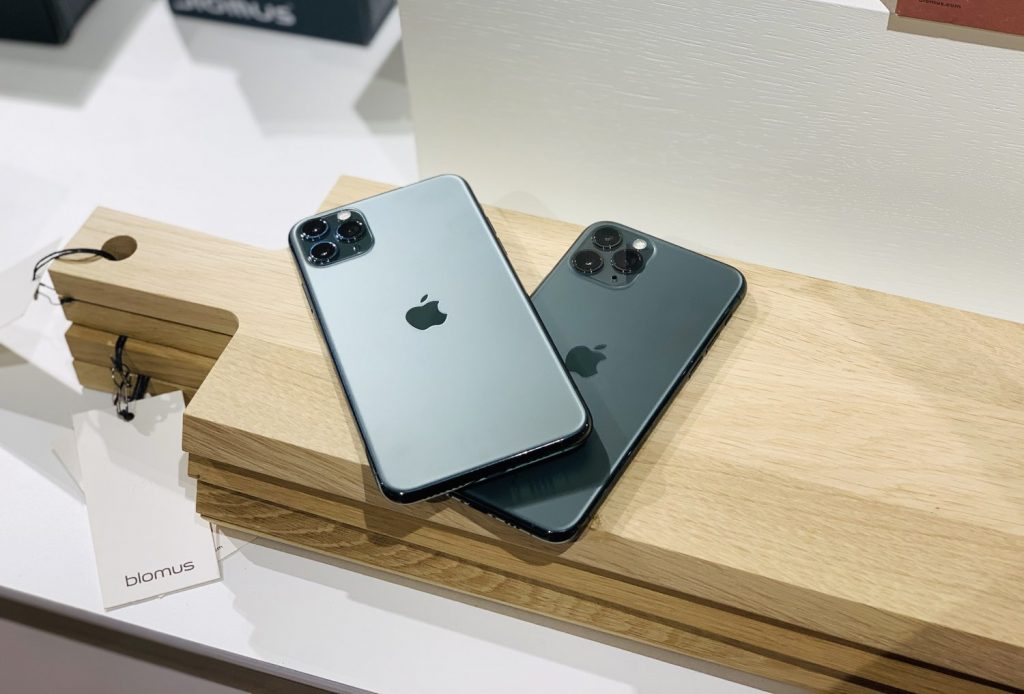
What we immediately noticed is that the logo has moved to the center. That could have to do with two-sided charging that was originally planned according to rumors (so that you know what to put down your AirPods ), but it may also be that Apple has chosen this so that the logo is not too close to the already prominent camera system. sits. It is striking that the iPhone brand name is no longer on the back, which gives the device a very clean look.
In terms of production, this device is again a technical piece of art. The back of the iPhone is made of one large piece of glass, which contains the camera bulge. The camera bulge is shiny, while the iPhone 11 is exactly the other way around. The back of the iPhone 11 Pro is also made of firmer glass. That is really only important if you prefer to use your iPhone without a cover. The device is also more water resistant: you can leave it in water of up to 4 meters deep for 30 minutes.
Due to the matte appearance, these devices seem smaller, but that is only apparent. The dimensions are exactly the same and the transparent case for the iPhone 11 Pro Max fits perfectly around the iPhone XS Max . The larger camera hole was not even disturbing.
Here you can see the color of the devices with warmer lamp light:
Screen iPhone 11 Pro: Super Retina XDR
- 5.8-inch and 6.5-inch size
- Same format and resolution as its predecessor
- Super Retina XDR
- Twice the contrast ratio of its predecessor
- OLED with Haptic Touch , True Tone and P3 color rendering
- HDR10 and Dolby Vision
- Standard 800 nit brightness, max 1200 nit with HDR content
The iPhone 11 Pro (Max) is equipped with a Super Retina XDR screen, a marketing name that should make it clear that this screen is just that little bit better. This is especially evident from the contrast: 2 million-to-1, which is twice as high as its predecessor. The new screen technology also delivers better battery life as it is more energy efficient. It looks beautiful: the colors are bright and sharp in every application we’ve tried. With normal use you do not immediately see the difference. You have to put all the devices next to each other, viewing the same photos and videos. But to be honest … then people we showed the two different screens of the iPhone XS Max and the iPhone 11 Pro Max still didn’t see it.
The screens themselves have been improved, but when you look at the edges, there is little difference with the iPhone X. Apple still has not opted for a truly borderless screen or a screen that goes around the corner, as with recent Samsung- devices. As far as we are concerned, it is not immediately necessary, but it is surprising that nothing has changed in terms of screen design since the iPhone X. Other manufacturers try to improve it every year, Apple not.
These screens still contain well-known technologies such as True Tone and the option to play HDR. There is a difference: the brightness is 800 nits by default, but this is increased to 1200 nits if you watch suitable (HDR) content. This only applies to the Pro and not to the iPhone 11. You also only have support for Dolby Vision on the Pro.
Another difference is that 3D Touch has disappeared on the entire iPhone 11 series and has had to make way for Haptic Touch . We don’t really miss it, but we do think it’s a shame that Haptic Touch is a bit slower.
What we think is a shame is that Apple’s ProMotion technology is not present. That would have made the screen really pro, but strangely enough it is missing. With ProMotion on the iPad Pro , animations look much smoother and scrolling is a lot smoother thanks to the higher refresh rate. We have found ProMotion on the iPad Pro for a number of years now and we would have liked Apple to bring this feature to the iPhone this year.
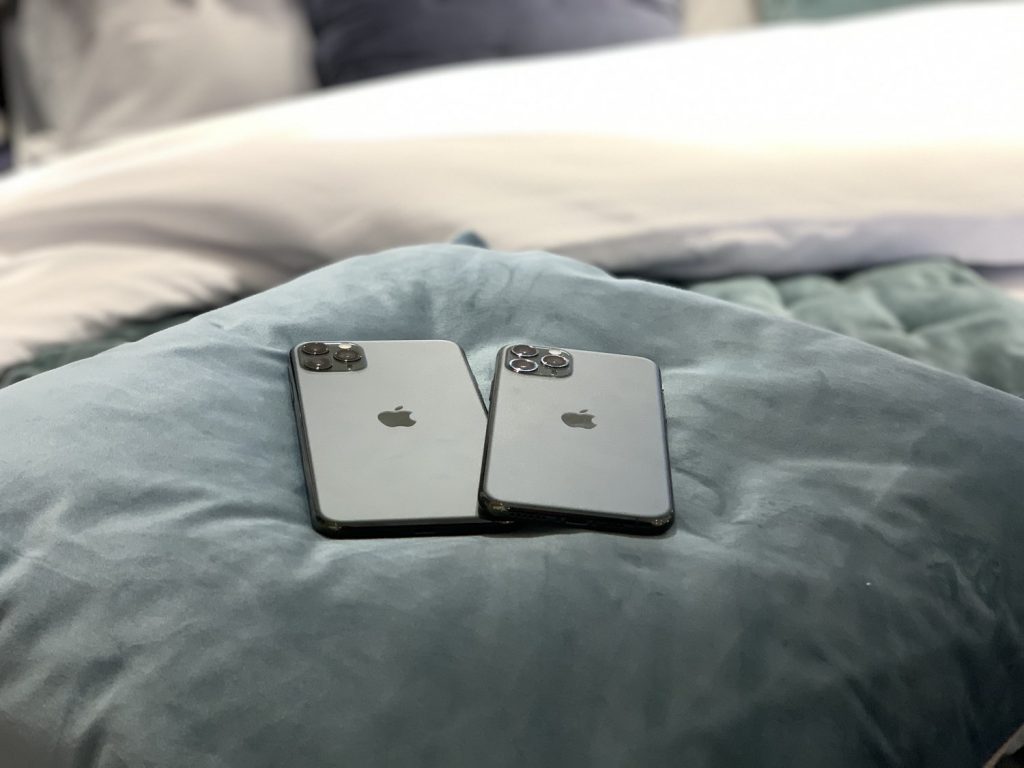
Hardware in the iPhone 11 Pro
- A13 Bionic processor
- 20% faster than its predecessor
- U1 chip for accurate location determination
- Dolby Atmos and Spatial Audio for spatial sound
- No 5G and two-way charging
With all smartphone manufacturers, it is now difficult to get performance improvements that you really notice in daily use. Everything is so fast and we kind of reach the point where more speed hardly makes sense anymore. This is also the case with Apple. Fortunately, Apple has also added some other hardware improvements.
A13 Bionic chip
Every year Apple introduces an improved chip and this year we number as expected to the A13 Bionic. Everything is just a bit smoother than the A12. According to Apple, the new chip is 20 percent faster, which you will especially notice in heavy applications. In practice, starting a game took about as long with us as on last year’s device. The faster processor probably mainly has to do with the extra possibilities of the camera: it must be able to analyze 24 million pixels with Deep Fusion at lightning speed.
A while ago, a video appeared showing that the iPhone XS is sometimes faster . The explanation could be that iOS 13 and many apps are not yet optimized for this new processor. Apple employees themselves will mainly have tested with the 2018 devices.
All models from the iPhone 11 series have the same processor with the same amount of RAM (4GB). So if your main concern is speed and future-proofness, then you can just as well choose the iPhone 11. If the Pro gets a future software update, the regular 11 will get it too. Both devices will last just as long in terms of support for software updates.
U1 chip
There is also a new chip in the iPhone 11 series, the U1. This ensures that you can locate objects more accurately with ultra-wideband. You can already use it to aim your device at the right person at AirDrop. You will then only see the devices in the direction you are pointing. This only works with devices with the new U1 chip and that is currently only the iPhone 11 series. In time, Apple could also install this U1 chip in the iPad , MacBook and in a tracker.
Spatial audio
With the iPhone 11 Pro, Apple has significantly increased the audio quality, with support for Dolby Atmos and spatial audio . The latter creates a spatial sound by creating a kind of virtual surround sound, something Samsung already did. The sound seems to come from all sides. In reality, it comes from the ear speaker on the top and the single speaker on the bottom of the iPhone. The grille with two rows of holes on the bottom of the iPhone may give the impression that there are two speakers on the bottom, but one of them is ‘fake’.
As for spatial audio, it’s a smart trick, and it actually works quite well with everything from music to movies and games. So developers don’t have to do anything for it. If a film does not support Dolby Atmos, you will still get almost the same effect. It’s a nice addition for people who use their iPhone a lot for YouTube and it also ties in nicely with Apple’s plans to make your iPhone much more of an entertainment machine with Apple Arcade and Apple TV + . Watching a video together? Even then everyone enjoys it, instead of sound that only seems to come from one side.
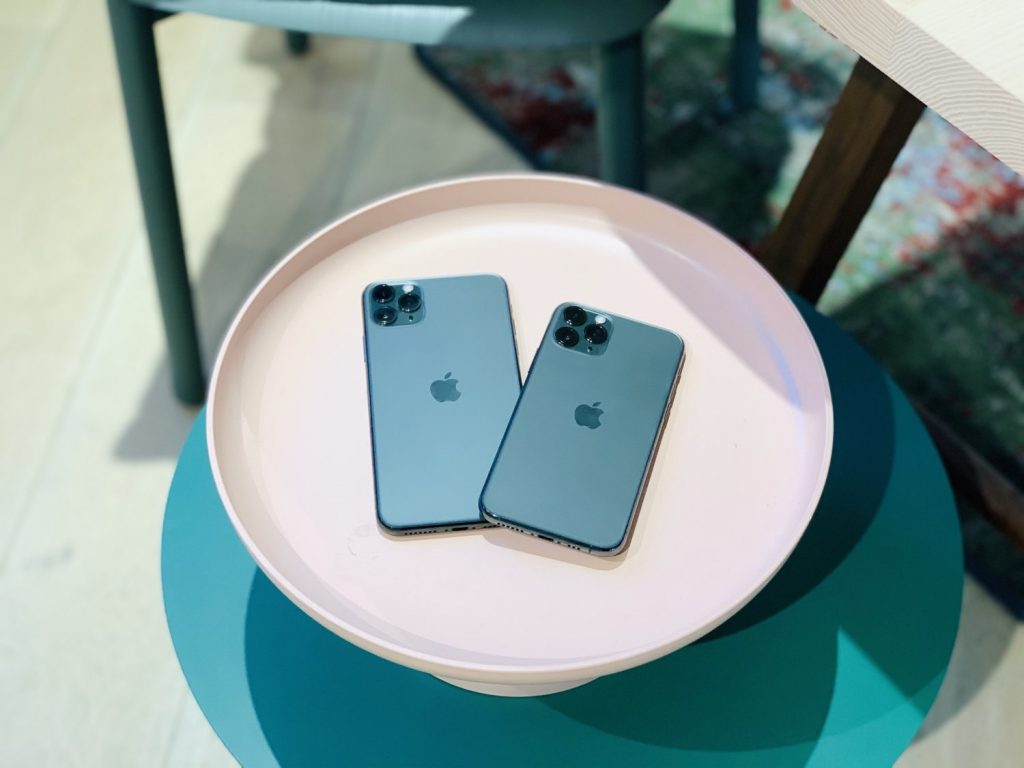
What’s missing in terms of hardware
- Charging on both sides
- 5G support
- 128GB storage
As far as hardware is concerned, there are currently two technical developments, in which Apple is not yet participating: 5G and two-sided charging. Of these, 5G is by far the most important. Two-way charging is a nice gimmick, but if we are to believe the experiences of Android users, it is usually slow and impractical. The one time your AirPods are empty can still be survived, or can be solved with a power bank, which many people already have with them. According to a teardown from iFixit, the necessary components for two-sided charging seem (partly) present in the Pro models, so there is still hope that Apple can activate it later with a software update.
5G is a different story. The networks are not quite ready yet, but more and more announcements are taking place and before you know it, your provider will have a 5G network in the air. It would be an expensive joke to exchange your device for a new one. At this point, you may not feel the need and worry about 5G a bit too much, but this is a phone that you should be able to use for at least five years (if you want to). So keep that in mind.
Another thing that bothers us is the fact that Apple has provided the entry-level model with 64GB of storage. That is really a joke for a ‘Pro’ device. The starting price of € 1,159 is therefore no longer realistic. We have noticed in practice that it works best to stay within 64GB, but with such an expensive device you want to be prepared for the future. So one step higher, but there is no 128GB. You are forced to opt for 256GB and then suddenly € 1,329 is on the receipt. That step is just too big.
With the iPhone 11, Apple has solved that much more sympathetically. With that device, there is only a difference of 50 euros between the entry-level model with 64GB and the upgrade to 128GB storage. We therefore recommend that you go for extra storage with that model, because it hardly makes a difference in price. A no-brainer in our opinion . With the iPhone 11 Pro (Max), Apple forces you into a difficult corner. Still choose 64GB, or pay 170 euros (!) Extra for a decent amount of storage? Every other manufacturer offers 128GB on the flagship models, Apple should do that too.
Face ID in the iPhone 11 Pro: faster and wider angle?
- Improved Face ID thanks to Neural Engine
- Slightly faster recognition of your face
- Larger viewing angle is hardly noticeable
Face ID has improved, especially when it comes to the angle at which your face is recognized. It’s not that recognition has become more accurate, but unlocking should be 30% faster, according to Apple. This is mainly due to iOS 13 , because we also noticed that Face ID on other modelsworks faster than before. The device also unlocks slightly faster when you sit at your desk and look down at the screen, so you no longer have to pick up the iPhone as often. It is now also possible to use Face ID with one eye closed, although this could be an improvement in iOS 13 as well. All in all, we think the faster Face ID recognition is no reason to choose this device; In our opinion, the function works fast enough on earlier devices, so you will not be annoyed by it.
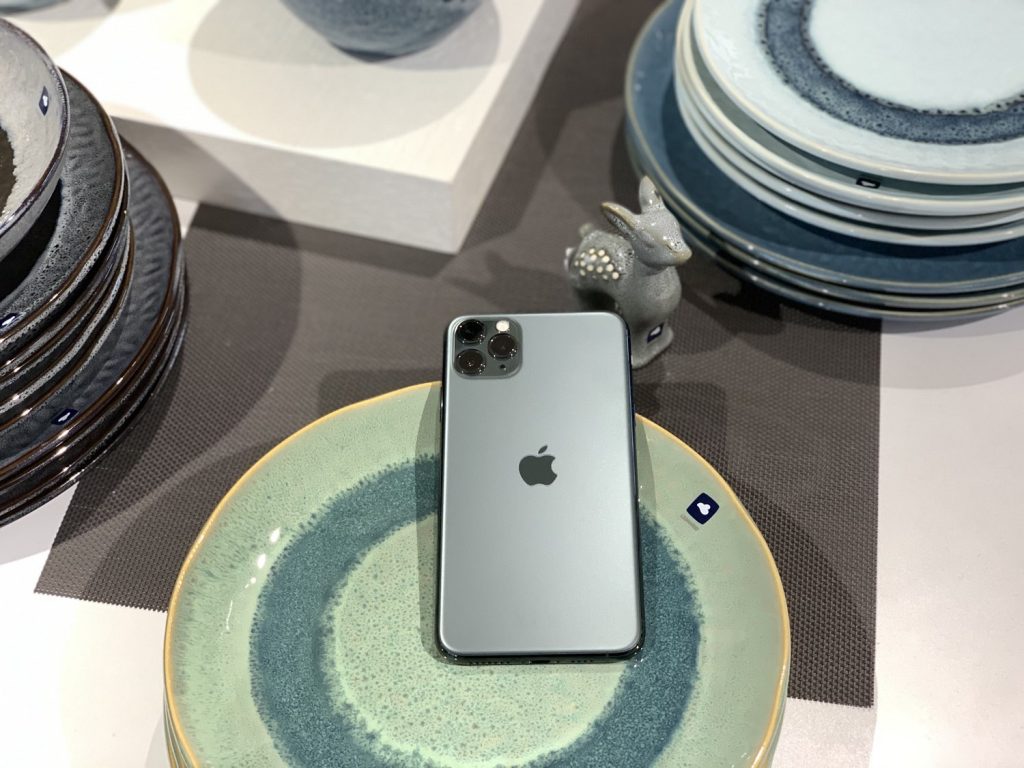
Battery life of the iPhone 11 Pro: 4 to 5 hours more
- Battery life greatly improved
- 18 Watt fast charger included, with USB-C cable
- Improved battery life is the feature that you will appreciate most in the long run
Ask an iPhone user about the most wanted feature and chances are you’ll get a simple answer: Ideally, the battery should last a little longer. Apple has listened to this much-heard wish and has extended the battery life on the iPhone 11 Pro by 4 hours and on the iPhone 11 Pro Max by no less than 5 hours. Even in an age of wireless chargers, where you recharge a few more times during the day, that is still important.
The battery life depends on usage, of course, but we noticed a clear difference from previous models on this point. The iPhone 11 Pro and 11 Pro Max could easily last a whole day out of the box, even with the intensive use that we are used to at the iCulture editors. With the iPhone 11 Pro Max, we still had a decent battery charge left at the end of the day, enough to get through the night and part of the morning without getting nervous. If you just stay at home and don’t do too much with your device, you have 50 percent left at the end of the day.
Fast charging included
We have consistently included a drawback in our iPhone reviews for years: the fact that Apple still includes a slow 5 Watt charger with even the most pricey models. This will change this year: the iPhone 11 Pro (Max) comes with an 18 Watt fast charger, which is a bonus, because Apple charges a hefty amount for the necessary parts if you had to buy them separately: € 35 for the 18 Watt adapter and at least € 25 for the necessary cable.
Always fast charging your iPhone is not good for the battery , but Apple has also found something to do, by charging smarter in iOS 13 . The first 80% goes relatively quickly and then it stops temporarily. When you almost have to get out of bed, the last 20% is recharged. The iPhone pays attention to your usual day and night rhythm. It is less taxing on your battery , but it goes wrong if you have to get up unexpectedly early, for example to catch a flight. But even then you can still manage with an 80% full battery.
We are very excited about the battery life. It never happened that the battery status fell below 30% and in half an hour you recharged the device sufficiently. The introduction of fast charging and wireless charging has changed my behavior: I rarely fully charge to 100% and hang the iPhone on the charger at irregular times, if necessary. Hanging on the charger all night is hardly an issue for me. If you still want to fully charge from 0% to 100%, it takes about 1.5 hours for the iPhone 11 Pro Max .
Of course, these devices also support wireless charging , but that is now a standard feature on the latest iPhones.
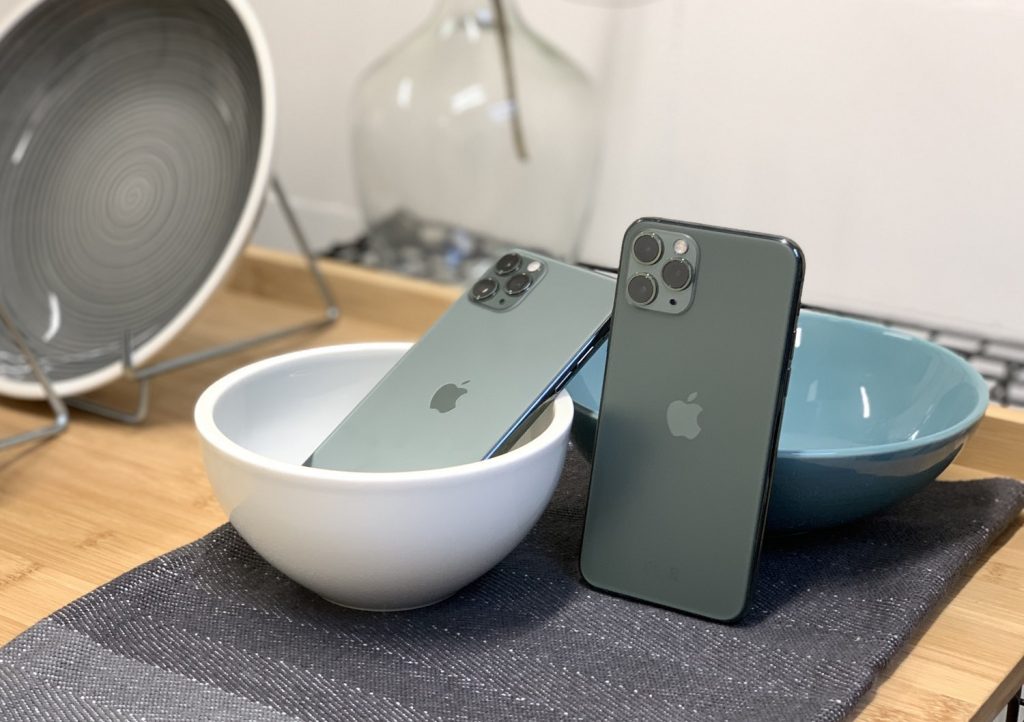
Camera of the iPhone 11 Pro: everything works
- Triple camera
- Standard wide angle (f / 1.8) and telephoto (improved f / 2.0 aperture for moderate light)
- New ultra-wide angle lens (f / 2.4 and 120-degree viewing angle, only on the Pro and Pro Max)
- Night mode
- Deep Fusion (to come)
- Front camera also greatly improved
You already read it in the short conclusion at the beginning of this review: I mainly chose the Pro model because of the camera. Other manufacturers are also adding more and more lenses and gimmicks and Apple cannot be left behind. Every year the camera improves and this year Apple is making very big steps, especially in the field of photography. Not only at the rear, because the front camera has been greatly improved and can now film 4K at 60 frames per second, while you can film at 120 fps for slofies . And the standard wide angle can focus up to three times faster in low light and does it fully automatically. The three black circles on the back may not look very nice, but you will have a lot of fun!
Also for your daily snapshots:

The iPhone 11 Pro (Max) is therefore all about the camera, because that’s where the really big innovations are. A logical choice from Apple’s viewpoint, because there is still a lot to tinker with at that point. And many people use their iPhone more often for photography than for other activities such as calling or keeping a diary. The camera system of the iPhone 11 Pro (Max) brings Apple back to the front lines when it comes to photography. But Apple’s lead is small. It may just be that Google will soon get over it with the Pixel 4.

At the same time, we must also admit that the camera interface has become a bit more complicated due to all these extras. This also applies to the editing options after taking the photo. In addition to filters and straightening, there are now suddenly many more options, which can make the once so simple photo app suddenly a bit confusing for the somewhat clumsy fellow human beings. For example, you no longer straighten it with a dial, but with a dashed line that looks like you are tuning in to a radio station.
The Deep Fusion Promise
This year the emphasis is on photos that always work. Especially when support for Deep Fusion is added later this year . 9 photos are taken, which are combined into one most optimal photo after a lightning-fast analysis of 24 million pixels. You no longer have to think for yourself (but fortunately it is still possible, with advanced camera apps where you can still set all kinds of aspects of the camera). It is actually a shame that we were not able to include Deep Fusion in this review right away. We will have to share our experiences with it at a later time. It all sounds very promising, which the neural engine does in less than a second. Deep Fusion is expected in a software update later this year, but Apple hasn’t given a concrete date yet.
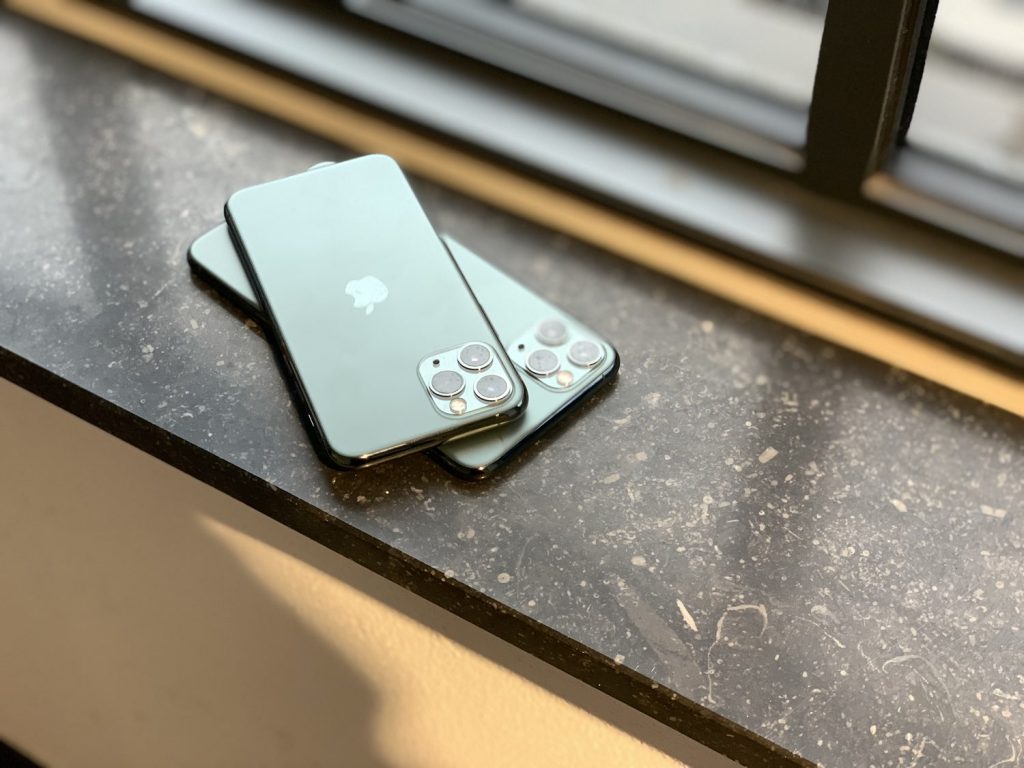
Ultra-wide angle lens: more in the picture
Earlier, Apple already added a telephoto lens and now an ultra-wide-angle lens is added. You now get a wide angle, ultra wide angle and telephoto lens, all 12 megapixels. This gives you 0.5x, 1x and 2x optical zoom at your disposal. Compared to normal camera lenses, you have a 13mm, 26mm and 52mm lens in your pocket, without having to juggle with lenses clumsily. You don’t hear us say that the quality is now just as good as a professional camera, but the iPhone is getting closer to it. And while as an amateur photographer with a ‘real’ camera I sometimes make the mistake that not all settings are correct, that cannot happen to me with the iPhone: it arranges the thinking for me and also gives a hint when it is better to ultra-wide angle.
The camera also understands certain parts of a photo better, such as trees, a face, or a dog. With Smart HDR, only specific parts of the photo are optimized, without affecting the entire photo.
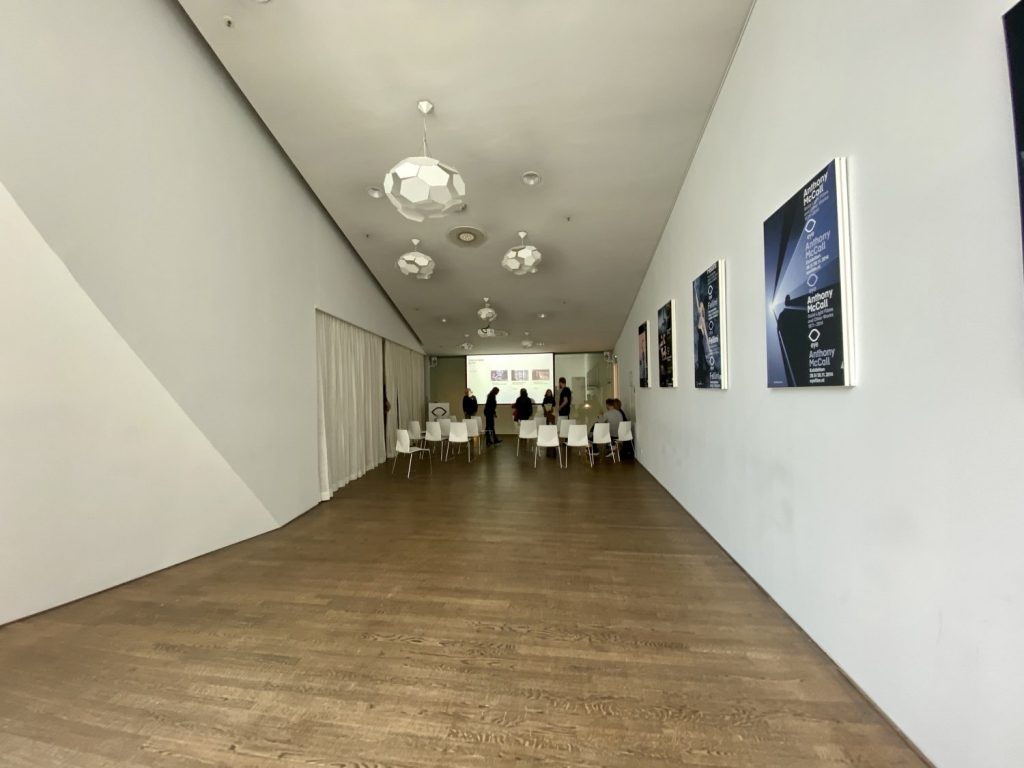
The ultra-wide-angle lens comes in handy when something just does not fit in the frame and you should normally have taken a step back. The great thing is that Apple immediately shows on the screen what is out of the picture when you use the normal wide angle (1x zoom). If you tap 0.5x zoom, the iPhone immediately switches to the ultra-wide-angle lens and shows a much larger part of the room or of a landscape.
This ultra-wide-angle lens is also on the iPhone 11, but be careful during use: some distortion can occur at the edges. As a result, it may appear that a building on the side is not quite straight, or that a person at the edge of the photo has gained a few pounds. However, that is also the style of photography: with an ultra-wide angle you sometimes want that ‘convex’ effect.
Night mode: it works!
For a number of years now, Apple has promised that photography in low light conditions has gotten better, but no real leaps forward have been made. With preflashes and a glowing screen, an attempt has been made to get you more beautiful in the photo, but with the iPhone 11 series you really stand on it without having to flash.
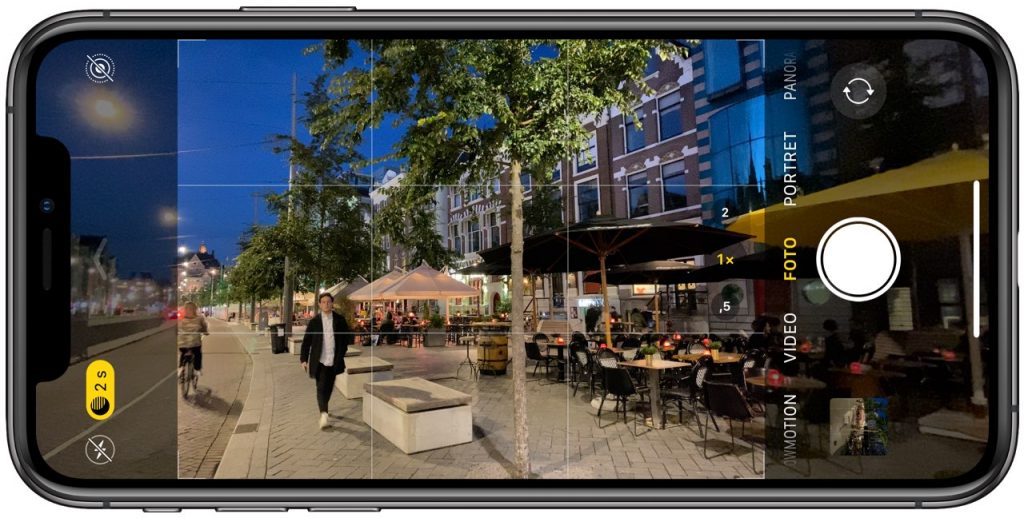
The night mode switches on automatically and ensures a longer exposure: up to 10 seconds if you shoot handheld and up to 30 seconds if you use a tripod. This is chosen automatically depending on a number of factors. We think it is a solution. Photographing a dark street suddenly succeeds, without the street lighting causing overexposed spots. This is something you could hardly or not manually control with previous iPhones.
Hopefully the auto night mode will also put an end to many people’s habit of using flash all the time, even when they want to shoot something really big, like a mountain. You can immediately see before you press the shutter button that it will look better in night mode. This is a strong improvement over the iPhone XS (Max), which only dates from last year. The only thing that can go wrong now is that you move your hand too much, but the iPhone also warns against that.
Night mode allows you to photograph a starry sky much more beautifully:
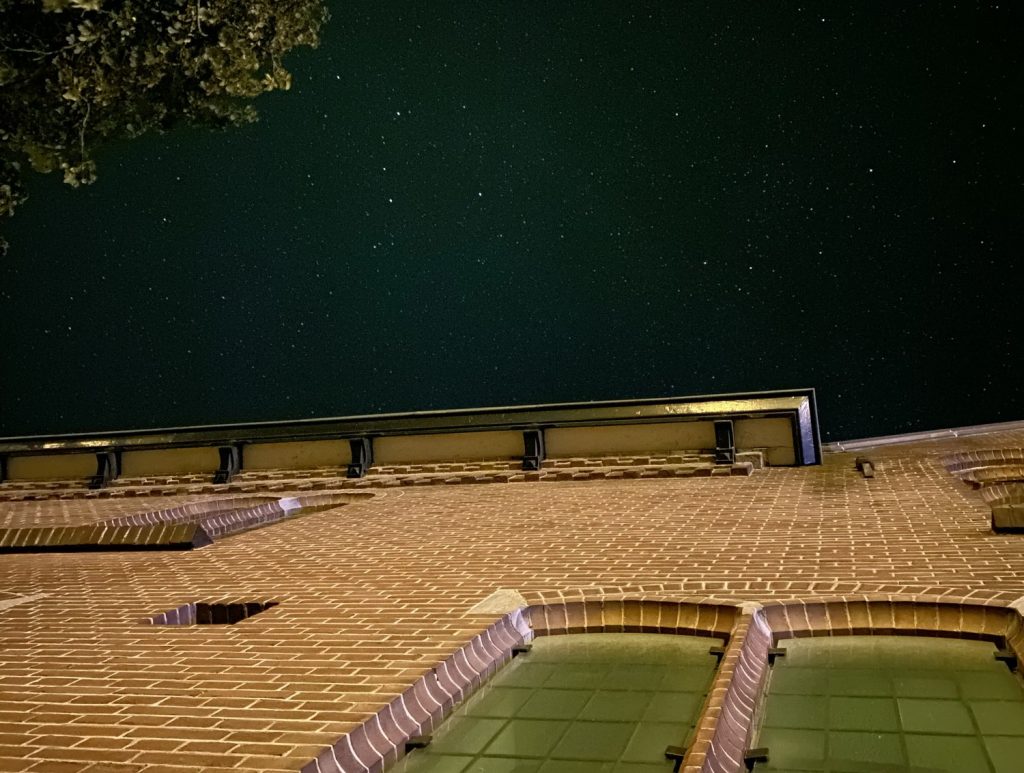
Night mode copes well with different types of light sources:

Apple is not the first with night mode, but as is often the case: they have done better. I compared photos taken with Samsung and Google night mode and they were sometimes overly lit. That quickly looks unrealistic. It’s a slightly different style and you might get used to it if you have such a device, but we think the iPhone is better able to reproduce the nighttime atmosphere more realistically. With other manufacturers it sometimes seems as if a construction lamp or the stadium lighting of a football field has been added.
For comparison, some photos taken with the iPhone X and the iPhone 11 Pro:
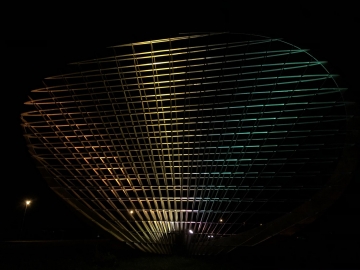
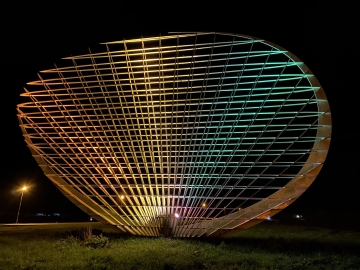


Portraits, selfies and slippers
The front camera in the iPhones has remained the same for a long time, but Apple is also tackling it more thoroughly this year. The 7-megapixel camera has been replaced by one of 12-megapixel. But beware: if you take a selfie in portrait mode, it will still be 7-megapixel by default. You have to press the icon outside the shutter button yourself to capture the wider 12-megapixel display. You will then see more of the background in the photo. The selfies show a lot of detail and offer nicer colors. The iPhone also automatically switches to this wider position when you take a landscape selfie, for example with a larger group of friends.
You can also take portrait photos with the front camera, where the iPhone is well able to separate the person and the background. However, the portrait mode on the back delivers better photos. New is now that you can not only take portraits with the telephoto lens, but also with the f / 1.8 wide-angle lens. This makes it possible to take a beautiful portrait even in poor lighting, something that was difficult to do with the iPhone XS Max . With the telephoto lens it sometimes resulted in blurry and grainy portraits.
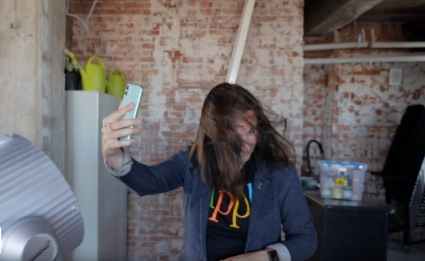
You can now also take slow-motion selfies, which Apple has dubbed “slofies.” Nice, but after a few tries, this might be more for people who are constantly photographing themselves. Unfortunately, functions such as night mode do not work on the front camera and therefore not for your selfies and slippers.
Target audience: who is the iPhone 11 Pro for?
It’s obvious to say you don’t need to upgrade if you already bought a new iPhone last year . You will notice some of the improvements, but it is a waste of money.
People who could upgrade are owners of an iPhone 7 or iPhone 8 who are ready for their first model with Face ID. They will immediately have to deal with a lot of innovations, such as the swipes that were introduced with the arrival of the iPhone X, but also Face ID and the notch at the top of the screen. Whether you immediately opt for the fairly pricey Pro models is still the question. You are not used to top notch and with an iPhone XR or the iPhone 11 you are probably already in the right place.
We think the iPhone 11 Pro is more for the people who upgrade every year and always want the best. They won’t be disappointed: with their steel frame and matte finish, these handsets feel ‘premium’ in every way and they are really great handsets where you don’t have to settle for less at any point. Well, at one point: the 5G function.
Alternatives
As in previous years, Apple again has the largest competitor in-house. People who have been using an iPhone for years are not so quick to switch to an Android device. Sometimes they’ve tried a foray to Android and stuck, but it’s common that people end up returning to Apple anyway.
If you are looking for a good alternative to the iPhone 11 Pro (Max), you can also choose the iPhone 11 . It has the same A13 Bionic processor and also features an ultra-wide angle and night mode for the camera. You will miss the telephoto lens, but you will also save a few hundred euros with it. The battery life is not that long, but good enough to get through the day. The size is still quite large at 6.1 inches.
For people who prefer a device that is as compact as possible, it is a bit more difficult. Smartphones are getting bigger and bigger and the 6.1-inch iPhone 11 might be a bit too big for you in that case. In that case, it is better to choose the 5.8-inch iPhone 11 Pro again. Or for its predecessor, the iPhone XS. If you want to be compact and pay attention to the little ones, then we still find the iPhone 8 a good alternative.
If you still want to take a look at the Android camp, the Galaxy Note 10 Plus could be a consideration. It has an excellent screen, also has a triple camera and a slim design. The battery life is less, but it charges nice and fast. You also get a stylus.
If you are mainly concerned with the camera, you could wait for the Made by Google event on October 15. The Pixel 4 is expected there and everything indicates that Google also wants to bet on a much improved camera this year. Keep in mind that Google has never released the Pixel line in the Netherlands before.
The fact is that the iPhones are innovative for Apple itself this year, but a lot less compared to the competition. Ultra-wide-angle lenses were already in LG’s top models, Oppo now offers you 10x optical zoom, triple cameras can be found at almost all manufacturers and Samsung already supplied a fast charger years ago. snap happens, while Apple prefers to wait a little longer and then bring it together in one device, in a way that it actually works. If you want the certainty of a well-functioning device that receives updates for a long time, then you’re always in the right place at Apple.
BENEFITS+
- Great leap forward for the camera
- Longer battery life on both models
- Matte finish, which gives you more grip
- Stronger glass that is less likely to break
- Powerful A13 Bionic processor
- Beautiful screen
- New color option midnight green
CONS-
- Cheaper iPhone 11 offers many identical functions
- Not 5G
- No two-sided charging (not yet)
- No 128GB storage
- Pricey
Conclusion
The iPhone 11 Pro Max is the best Apple can make right now. Compared to the models of last year, the camera in particular has improved and we think that is the function that most deserves the designation ‘Pro’. The longer battery life, the more break-resistant glass, the stainless steel edge and the matte finish are not immediately reasons to pay a few hundred euros extra. We therefore think that the two top models will get a lot of competition from the iPhone 11 this year.
With the iPhone 11 Pro, everything has been further refined and these are mainly devices for people who want the best of everything. You don’t have to be a professional for that, the only thing you need is a slightly thicker wallet.
Last year, the iPhone XR was an unexpected success. All the attention from the reviewers and Apple fans went to the XS (Max), but in reality there were a lot of users who chose the XR. This year, the temptation to opt for the entry-level model is even greater, because the name is the same. As an unsuspecting buyer, you immediately have the idea that you get about the same, but for a few hundred euros less. If I were a regular user, I would know: it would probably be an iPhone 11 in red or one of the new colors.
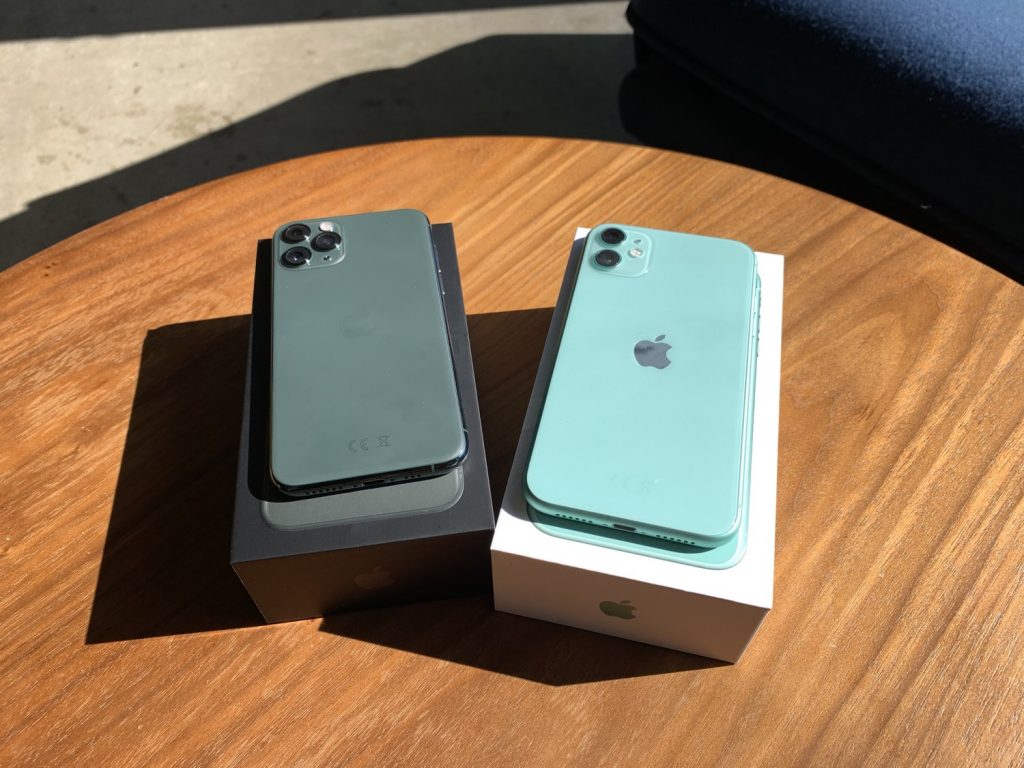
The fact that I did choose the iPhone 11 Pro (Max in my case) has to do with the fact that I work professionally with iPhones and because I photograph so much (also professionally) that I simply want the best camera. Moreover, I often use 2x zoom, so then you are already dependent on the telephoto lens, which you only find in the Pro.
We are impressed by the new camera: we see a clear difference in quality from last year’s cameras and think the night mode and the ultra-wide angle lens are a real improvement. Ultimately, you choose this device because of the better camera, but in the longer term there is something else that will make you appreciate this device: the longer battery life.
